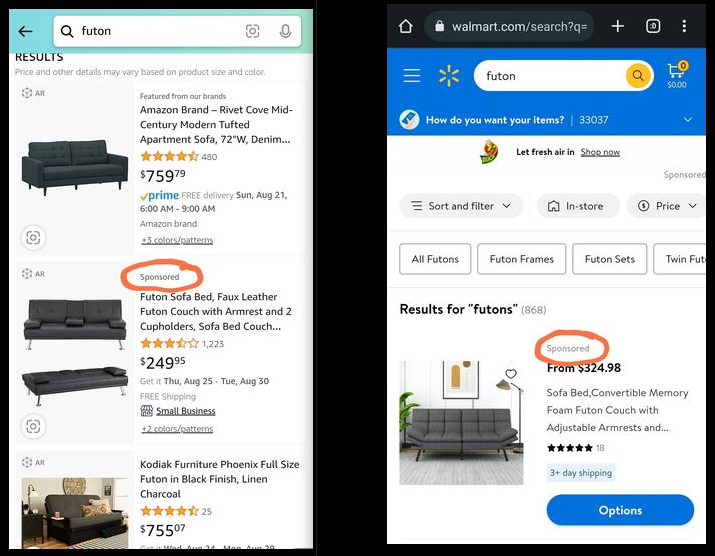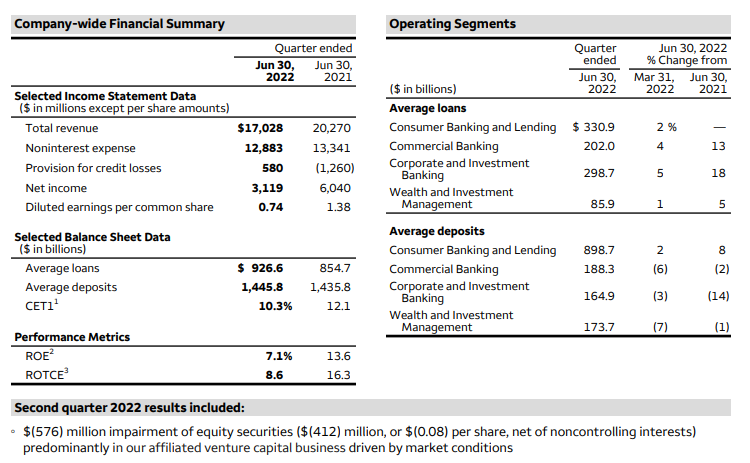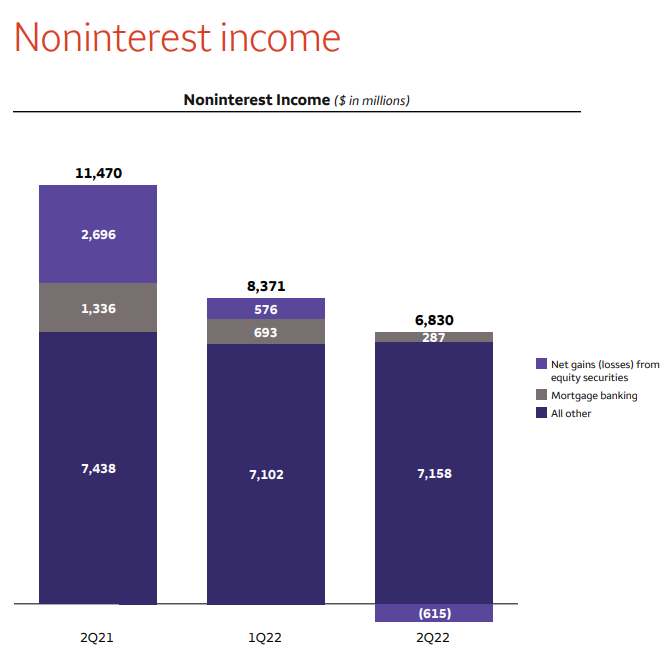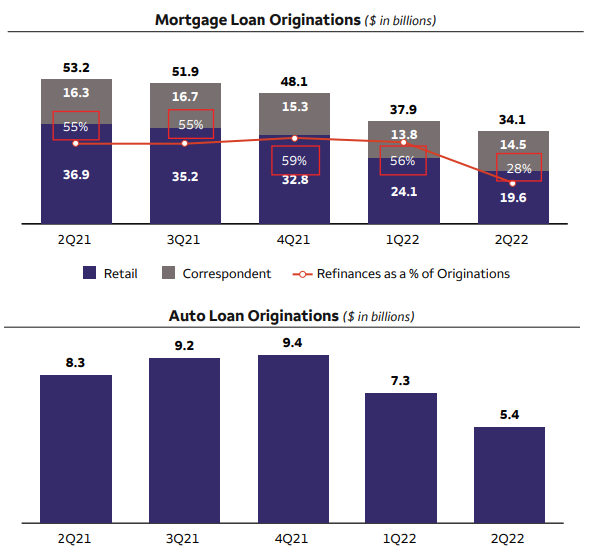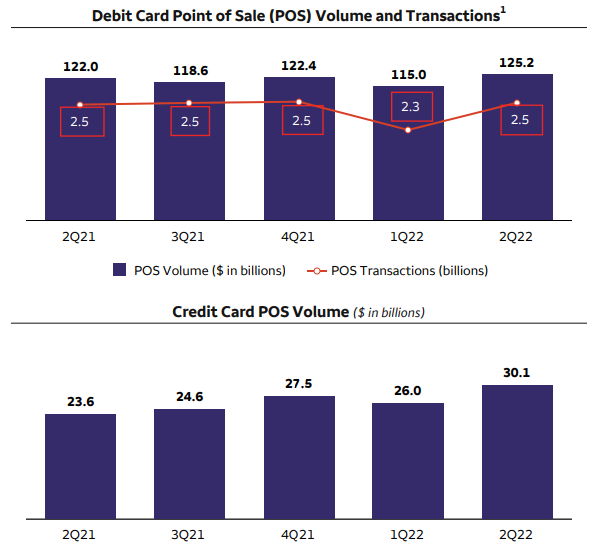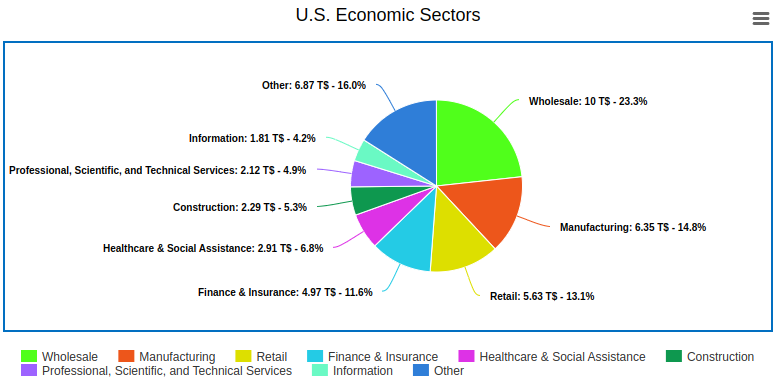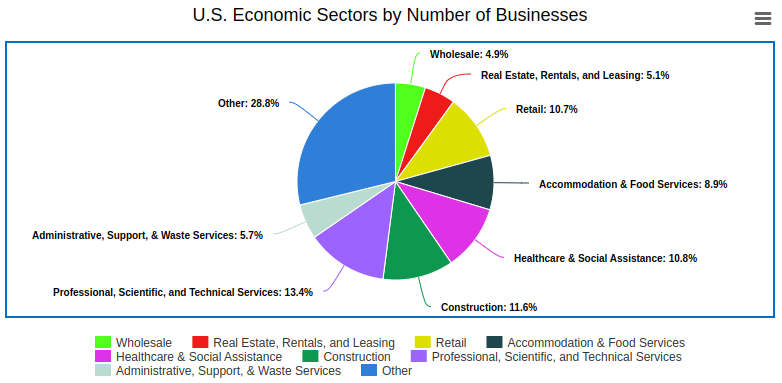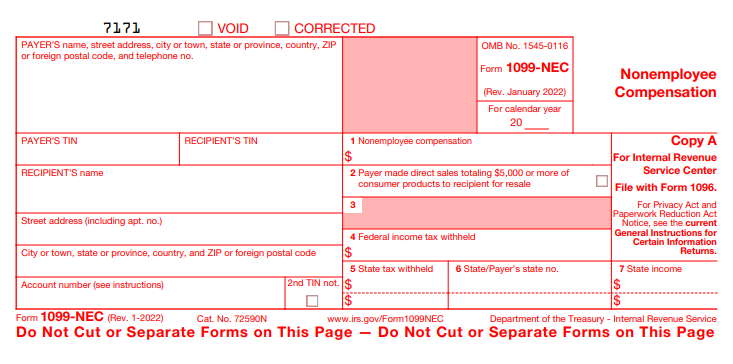Bankruptcy–the death of a company. Or is it?
American Airlines, Trump’s Plaza Hotel, Hertz, and superhero company Marvel are just a few of the big name companies which are very much alive despite having gone bankrupt. They managed to do this by using the right type of bankruptcy.
You see there are actually six different types of bankruptcy. Each is named after the chapter of federal bankruptcy law that describes it.
- Chapter 7 bankruptcy (also called “liquidation bankruptcy”)
- Chapter 9 bankruptcy (for when cities, counties, and other local governments go bankrupt)
- Chapter 11 bankruptcy (also called “reorganization bankruptcy”)
- Chapter 12 bankruptcy (for farmers)
- Chapter 13 bankruptcy (an especially lenient type of bankruptcy only available to individuals with relatively low income and debt levels)
- Chapter 15 bankruptcy (for international bankruptcy cases)
Chapter 7 bankruptcy is the most common type of bankruptcy, and it’s what most people intuitively think of when they hear the word “bankruptcy”. In a chapter 7 bankruptcy, a company will sell all its assets and shut down permanently.
In contrast, a company that enters chapter 11 bankruptcy does so with the hope of coming out the other side stronger. As we’ll see later in this article, there are things which can block that from happening, but according to Forbes about 25% of companies do make it through chapter 11 and become successful again.
What benefits does chapter 11 bankruptcy give to a company in debt?
All six types of bankruptcy serve the same general purpose as far as the government is concerned: to protect struggling debtors (people who owe money) from creditors (people who are owed money). The Supreme Court emphasized this in a 1934 case where their decision statement said:
“[Bankruptcy] gives to the honest but unfortunate debtor… a new opportunity in life and a clear field for future effort, unhampered by the pressure and discouragement of preexisting debt.”
Putting aside the 100 year old language from that statement, the reason the government cares is that people (and companies) with crippling debt don’t spend money in the economy, and they don’t pay a lot in taxes. The government would rather let investors and creditors take a loss than the economy and government revenue take a loss. That is self-evident from the fact that in every type of bankruptcy, certain tax debts cannot be forgiven. Nevertheless, bankruptcy is generally good for debtors and bad for creditors.
There are five common ways in which bankruptcy can help debtors:
- Debt collectors can be temporarily blocked by court order. That gives the debtor breathing room to figure out how to proceed.
- Certain debts can be erased.
- Debts can be renegotiated according to a payment plan that has lower payments, possibly extending over a longer time span.
- The debtor can break certain contracts such as leases without any penalty.
- The debtor can “reset” certain contracts that have gone into default.
Which of these tools are available and which contracts or debts they each apply to depends on which type of bankruptcy the debtor uses. For chapter 11 bankruptcy specifically, the primary benefits to the debtor are:
- An automatic block on most debt collection that lasts for the duration of the case or until the judge orders otherwise.
- The debtor has the choice to break any executory contract without penalty. An executory contract is any contract which is incomplete on both sides. For example, ongoing service contracts, retainers, and unexpired leases. An example of a non-executory contract would be a prepaid purchase agreement where one party has already paid for something but the debtor hasn’t delivered it. The debtor cannot cancel that kind of contract.
- Some debts can be reduced or eliminated if enough creditors agree (importantly, not all creditors need to agree for this to happen).
Now if we switch to a creditor’s perspective, bankruptcy is typically bad. Creditors don’t want to have the debts they are owed reduced. For that reason, creditors will often race to try to collect debts before a company files bankruptcy.
However, there are rare instances when a creditor might actually prefer bankruptcy, and they can file what’s called an “involuntary bankruptcy petition” to make that happen. The main reasons why a creditor might do this include:
- The debtor recently sold or gave away assets that the creditor wants to collect, and the creditor wants to “undo” that transfer under the fraudulent conveyance doctrine.
- The creditor is worried that the debtor will fraudulently transfer assets in the future, so the creditor files an involuntary bankruptcy to prevent that.
- The creditor is worried about the debtor paying off “favored creditors” and leaving nothing for them.
- A small, resource-constrained creditor is worried about other, bigger creditors getting to the debtor first and collecting all the assets before the small creditor can.
Involuntary bankruptcies do happen for all of the reasons above, but they are relatively rare. In the rest of this article, we’ll focus exclusively on voluntary bankruptcy where the debtor has filed for bankruptcy themself.
What is the outcome of chapter 11 bankruptcy?
Bankruptcy is a legal process that determines who gets what when there’s not enough to go around. The chapter 11 bankruptcy process in particular provides a set of rules for a company in debt to renegotiate its debts and other contracts. The goal is to reduce the burden of debt payments so that the company in debt can survive and eventually pay back more of its debts than it would be able to if it just shut down altogether.
If negotiations are successful, then the debtor, creditors, and court will make a new set of agreements described in a document called the “reorganization plan”. The reorganization plan is the centerpiece of the entire chapter 11 process. It will describe what existing contracts will be cancelled (including any existing stock that will cancelled), what new contracts will be created (including any new stock that will be issued), any assets the debtor will sell, any mergers or acquisitions the company will undergo, and who will the lead the restructured company after bankruptcy. Creating, agreeing upon, and implementing the reorganization plan is the entire purpose of chapter 11 bankruptcy.
What are the exact steps in a chapter 11 bankruptcy?
Step 0: Pre-bankruptcy planning
A company realizes it is approaching insolvency and starts talking with bankruptcy attorneys. If it decides on chapter 11 bankruptcy, then it will retain a bankruptcy attorney as legal counsel and together with its counsel will select a jurisdiction. The choice of jurisdiction is EXTREMELY IMPORTANT as bankruptcy cases depend on both federal and state law, and even the specific judge involved can have a large influence on what happens in the case. Many companies will choose to file in Delaware if they are incorporated in Delaware.
Step 1: Filing a bankruptcy petition
The company will file a petition for chapter 11 bankruptcy with the court it chose in the last step. This petition can be either accepted or rejected (acceptance is not automatic). If the petition is accepted, then the petitioner is referred to as the “debtor” and is considered to have officially entered bankruptcy. The debtor can submit a reorganization plan at the time of filing or at any point during the case.
Step 2: Automatic stay begins
As soon as a chapter 11 petition is filed, the bankruptcy court will automatically order a type of injunction known as an “automatic stay”. This is a court order that temporarily suspends and prevents any foreclosures, debt collection activities, and repossessions of property by creditors.
Step 3: “Debtor in possession” role assumed
Once bankruptcy begins, someone must serve as fiduciary of the debtor’s assets on the creditors’ behalf. In many types of bankruptcy including chapter 7 bankruptcy, it’s common for the court to appoint a trustee (called the “case trustee”) to take control of the debtor’s assets during the case. However, because the entire point of chapter 11 bankruptcy is to give the debtor a chance to restructure its debt and survive, it’s much more common for the court to allow the debtor to retain operational control of its assets during the case. If that happens (it almost always does), the debtor is referred to as the “debtor in possession”. The debtor in possession does not have total freedom like it did before entering bankruptcy, but it can essentially operate as normal when it comes to normal business operations.
Oversight of the debtor in possession is primarily done by the U.S. Trustee.
Not to be confused with a case trustee or the debtor in possession, the U.S. Trustee is the subcomponent of the DOJ which is responsible for overseeing the administration of bankruptcy cases. Responsibilities of the U.S. Trustee include:
- Monitoring the debtor in possession’s operation of the business
- Monitoring any reports and fees submitted by the debtor in possession
- Conducting a meeting of the creditors (the “section 341 meeting”)
- Determining & imposing requirements on the Debtor in Possession. These requirements may include filing monthly income and operating expense reports, establishing new bank accounts, paying employee withholding and other taxes, etc. If the Debtor in Possession does not comply with the U.S. Trustee’s requirements, the U.S. Trustee can file a motion to have the chapter 11 case dismissed or converted to another type of bankruptcy such as chapter 7.
The Debtor in Possession is legally required to pay a fee to the U.S. Trustee every quarter until the bankruptcy case is closed.
NOTE: In North Carolina and Alabama, bankruptcy administrators perform essentially the same role that U.S. Trustees play in the other 48 states. Bankruptcy administrators are under the Administrative Office of the United States Courts though rather than the DOJ.
DIP financing
One of the first priorities for a debtor in possession is to evaluate whether they have enough money to finance the bankruptcy proceedings and also continue operating as a business. If not, then the debtor in possession will try to get a special type of loan called debtor-in-possession financing (or DIP financing). Ordinarily, a creditor would not want to lend to a company that is already in bankruptcy because it can’t pay its existing debts. However, bankruptcy law provides a solution. If a lender provides DIP financing, then it will get priority over existing creditors to get paid back. That gives a lot of protections to any lenders who provide DIP financing.
Cases of special concern
If the U.S. Trustee or an equity owner of the debtor is concerned about fraud, dishonesty, incompetence, or severe mismanagement by the debtor’s current management, then they can request that the court appoint a case trustee to manage the debtor’s affairs during the case rather than leaving the debtor in possession of its own affairs. In the absence of such concerns, it is still possible for the court itself to appoint a trustee if it determines that doing so is in the best interest of creditors. However, it is rare that a case trustee is ever actually appointed in a chapter 11 case. Creditors or equity owners who are concerned about current management should weigh the costs and risks of a trustee before requesting one:
- The case trustee essentially becomes the debtor’s new CEO. It may be difficult to find a qualified CEO on short notice and expensive to hire them if you do find them. It can be even more expensive than normally hiring a CEO since the individual has to take substantial risk to involve themself with a bankrupt company.
- A company going through bankruptcy is one which is already under considerable stress. That means the trustee will have very little margin for error when learning to operate the company. A misstep could easily destroy any remaining company value.
For concerned stakeholders, there is an intermediate option between debtor in possession and case trustee. In this intermediate scenario, the debtor remains mostly in control. However, a second party called an “examiner” is appointed to conduct any investigations into the debtor’s affairs rather than leaving such investigations to a potentially dishonest existing management team. The role of an examiner is highly flexible. The court can essentially authorize an examiner to have anything from minimal investigatory powers up to almost full trustee powers. Examiners are not commonly used, but they can be a good solution for large companies with questionable management teams.
Step 4: Committee(s) are formed
As soon as practical after the automatic stay begins, the U.S. Trustee will appoint some of the unsecured creditors to serve on a committee (the “unsecured creditors committee“). No creditor is forced to serve on the committee if they don’t want to, but unsecured creditors almost always want to as the role gives them power to influence the direction of the bankruptcy case. Typically, the committee consists of the 7 largest unsecured creditors.
The U.S. Trustee also has the power to appoint additional committees of creditors and/or equity owners if it believes that doing so is necessary to ensure adequate representation of creditors or equity owners in the bankruptcy case.
One of the first roles of the creditors committee(s) is to participate in a meeting with the U.S. Trustee and the debtor (called the “section 341 meeting”). This meeting is an opportunity to question the debtor under oath about the debtor’s actions, conduct, property, and case administration.
Section 1103 describes the full powers and duties of committees, but two key powers are:
- The right to investigate the actions and finances of the debtor (including ongoing aspects of the debtor’s business)
- The right to request the appointment of a trustee or examiner
Step 5: First day motions filed
If a debtor is under serious financial pressure, they will often file “first day” motions with the court as soon as the bankruptcy begins. In court, a motion just means a request made to the judge. First day motions commonly include things like a request to maintain existing bank accounts, maintain and provide assurances to utility companies, honor customer deposits, and pay pre-petition debts to critical vendors that the debtor needs to maintain a working relationship with in order to continue operating during the bankruptcy case.
Step 6: Post-petition disclosure statement(s) submitted
As I mentioned before, the ultimate goal of the chapter 11 process is to create a reorganization plan and reach sufficient consensus among creditors and equity owners for that plan to be accepted by the court. However, before any class of creditors or equity owners can vote on a proposed plan, a disclosure statement must be provided to them. The same or different disclosure statements can be provided to each class of creditor and equity owner, but every individual or company in a particular class will receive the same statement. For every class, the disclosure statement must contain “adequate information“. What exactly constitutes “adequate information” is case dependent in general, but must always include:
- A discussion of the federal tax consequences of the proposed plan to the debtor
- A discussion of the federal tax consequences of the proposed plan to a hypothetical “typical investor” in that class of creditors or equity owners
Before any version of a disclosure statement is sent out, the court must hold a hearing and formally approve the statement as containing “adequate information”. This hearing passes no judgement on the merits of the plan, merely on the merits of a disclosure statement for the plan.
If a plan is rejected, revised, and resubmitted as a materially different plan, then new disclosure statements will need to be approved and then sent to creditors and equity owners.
Important Note: Neither the disclosure statements nor reorganization plans are required to comply with ordinary non-bankruptcy rules about solicitations for the sale of securities.
Step 7: Reorganization plan proposed
The reorganization plan has the power to wipe out huge debts and cancel stockholder ownership rights. Because of that power, chapter 11 law provides specific rules about who can propose plans and who can vote on plans.
During the first 120 days (4 months) of a bankruptcy case, only the debtor can propose a reorganization plan. This is called the “exclusivity period”. If the case is complex, the bankruptcy court has the power to extend the exclusivity period but only up to a maximum of 18 months.
If the debtor and creditors have not agreed on a reorganization plan by the end of the exclusivity period, then creditors can also draft their own plan proposals to be voted on. That is usually bad for the debtor.
Terminology
A very common jargon word in chapter 11 plans is “impaired”. A creditor is “impaired” by a reorganization plan if the creditor’s contractual rights would be altered by the plan. Two minor caveats to that definition are that (1) a creditor is considered impaired even if the contractual alterations are net positive to them, and (2) a creditor is NOT considered impaired if a debt in default is “reset” to a pre-default state.
Plan requirements
Section 1123(a) of the Bankruptcy Code specifies what provisions must be included in any proposed plan. Some of the most important items are:
- The different categories (called classes) of creditors (e.g. unsecured creditors, creditors secured by liens on company owned trucks, and creditors secured by a mortgage on a particular property, etc)
- Which classes of creditors would not be impaired under the plan
- Which classes of creditors would be impaired under the plan, and how
- A description of any mergers or consolidations that are part of the plan
If you’re curious what a real reorganization plan looks like, here is a copy of Winn Dixie’s chapter 11 reorganization plan as filed with the SEC.
Pay out priority
Given that companies enter bankruptcy when they don’t have enough money to pay all their obligations, a very important question in any bankruptcy is: who gets paid first and who gets paid last?
By default, any reorganization plan must pay out in a particular order: First secured creditors are paid, then unsecured creditors are paid, and finally interest (i.e. equity) holders are paid. Commonly, secured creditors are paid back in full, unsecured creditors are paid back only part of what they are owed, and interest holders don’t get anything.
However, not all unsecured creditors are treated equally. The Bankruptcy Code actually specifies a particular order for specific unsecured debts to be paid back:
- Case administrative expenses
- Wages and commissions for employees and some independent contractors of the debtor, up to $10,000, that were earned within the last 180 days before bankruptcy was filed
- Contributions to an employee benefit plan in compensation for services within the last 180 days before bankruptcy was filed, up to $10,000 per employee minus the amount from the wages and commissions mentioned before
- Unpaid debts to farmers and fisherman, up to $4000 per individual farmer or fisherman
- Deposits put down for the purchase of property or services or the lease of property, up to $1,800 per individual depositor
- Taxes and government penalties
- Unsecured claims to banks
- Liabilities for deaths or personal injuries
Now after hearing all of that, it might seem like general unsecured creditors are pretty screwed. To be frank, they often are. However, they are not necessarily as screwed as you might guess. The chapter 11 bankruptcy process itself is expensive, and additionally there are legal protections that make it difficult to pass a reorganization plan if some creditors get little to nothing. Because secured creditors are often risk-averse banks who would rather take a small loss and move on than risk more time and losses from drawn out bankruptcy litigation, they will sometimes agree to give up some of the their payout to the unsecured creditors so that the plan can move forward.
Step 8: Reorganization plan voted on
To be accepted, a reorganization plan must be voted on using a particular type of voting. To describe that voting system, I need to make one tweak to what I said earlier. I’ve been referring to “classes of creditors”. Technically, what we care about are not classes of “creditors” but classes of “claims”. A claim is basically a debt. It’s not a nuance worth mentioning in a high-level overview, but it does affect the voting process since technically it is classes of “claims” which vote not classes of “creditors”. If a single creditor holds multiple types of claims, then it may cast its vote multiple times with different weights in each class of claims it is a part of. Let me explain with an example:
Example
Suppose Shoelaces Inc files for chapter 11 bankruptcy. Bob has an unsecured claim for $130,000 against Shoelaces Inc. Alice has an unsecured claim for $50,000. Candice has an unsecured claim for $70,000 and a secured claim for $50,000 (secured by a shoelace making machine). Drake has a secured claim of $10,000 (secured by computer server).
There are three classes of claims against Shoelaces Inc: (1) unsecured, (2) secured-by-shoelace-machine, and (3) secured-by-computer-server.
In the unsecured claims class, Bob, Alice, and Candice all have voting power.
- Alice: 50,000 unsecured claim class votes
- Bob: 300,000 unsecured claim class votes
- Candice: 70,000 unsecured claim class votes
- Total: 420,000 unsecured claims class votes
In the secured-by-shoelace-machine claims class, only Candice has voting power:
- Candice: 50,000 secured-by-shoelace-machine claims class votes
- Total: 50,000 secured-by-shoelace-machine claims class votes
In the secured-by-computer-server claims class, only Drake has voting power:
- Drake: 10,000 secured-by-computer-server claims class votes
- Total: 10,000 secured-by-computer-server claims class votes
Each class of claims will vote on a proposed reorganization plan. A class of claims accepts the plan if at creditors holding at least (a) 1/2 of the claims in number and (b) 2/3 of the claims in amount, vote for the plan.
For example, if Bob votes for the plan but Alice and Candice vote against it, then Bob satisfies the 2/3 requirement since he owns 71.4% of the total claims amount (greater than 2/3) but the vote fails overall because less than 1/2 of the claims holders voted for the plan. In this example, that would not have happened if Candice was restricted to only vote as part of the secured-by-shoelace-machine claims class.
Owner votes
While less important than the creditors, owners (also referred to as interest holders) also get to vote on plans. A class of interests (e.g. common stock A, common stock B, preferred stock, etc) accepts a plan if holders of at least 2/3 of that class of interest vote for the plan. This is the same as for classes of claims except that we don’t have the 50% requirement stacked on top.
Special rules
If a particular class of claim or interest is left unchanged by the reorganization plan, then that class is automatically considered to have accepted the plan. Similarly, if a class would not get anything from a proposed plan (e.g. common stockholders are often such a class in the case of a public company filing chapter 11), then that class is automatically considered to have rejected the plan.
Additionally, if the court believes that any creditor or interest holder is not acting in good faith or is acting against the rules of bankruptcy, then that creditor or interest holder can be excluded from any votes by court order.
Additional special rules apply if any creditor or interest holder has agreed to a plan that was drafted before the debtor actually filed their chapter 11 petition.
Step 9: Reorganization plan confirmed
To be confirmed, a reorganization plan needs to meet both legal and class voting requirements. The full list of requirements is enumerated in section 1129(a), but the main ones to remember are the following:
- The plan contains all information required by the U.S. Bankruptcy Code.
- Any payments made by the debtor for services related to the bankruptcy case have been approved by the court.
- The proponent of the plan (usually the debtor) has disclosed the identity and affiliations of any individuals who would become officers or directors of the debtor under the plan.
- Any governmental regulatory commission with jurisdiction over rates of the debtor (mostly applies to utility companies) has approved any rate change proposed by the plan.
- For each class of claims or interests that is impaired by the plan, one of the following criteria must be satisfied: (a) each holder in that class has accepted the plan, (b) each holder in that class will get property with at least as much value as they would have received under a chapter 7 liquidation bankruptcy, or (c) in the special case that 1111(b)(2) applies to claims of the class, then the amount specified by 1129(a)(7)(B) must be provided.
- Each class of claims or interests has either accepted the plan or is contractually unimpaired.
- If a class of claims is impaired under the plan, then at least one class of impaired claims has accepted the plan. For purposes of this requirement, no acceptances by insiders count.
What happens if the reorganization plan isn’t confirmed?
If the parties of a chapter 11 bankruptcy case cannot come together and pass a reorganization plan, then there are three scenarios that might happen.
Cramdown. The first scenario is called a “cramdown” (so named because the plan that is “crammed down” the throats of dissenting creditors). If any impaired class does not accept the plan, then the only option to confirm the plan is by using a cramdown. The full rules for cramdowns are described in section 1129(b) of the Bankruptcy Code, but the two key requirements are:
- The plan does not “discriminate unfairly” (essentially meaning that one class of creditors is not treated worse than another unless there is a business or contractual reason to do so).
- The plan is “fair and equitable” with respect to each class of impaired, unaccepting claims or interests.
The meaning of “fair and equitable” is described in 1129(b)(2) but an essential requirement is that higher priority classes are paid fully before anything is paid to lower priority classes.
Conversion. The second scenario is that (usually at the debtor’s request) the case is converted to another type of bankruptcy. Most of the time when this is done, the conversion is to a chapter 7 liquidation bankruptcy where the debtor company shuts down altogether.
Case Tossed. The third scenario is that the court decides the debtor has not been acting in good faith. In that situation, the court may toss the case and leave the debtor to be ravaged by creditors through ordinary debt collection procedures.
Step 10: Exit bankruptcy
Once a reorganization plan is confirmed, there are still things that may need to happen before the debtor can officially exit bankruptcy:
- Any conditions that the plan is contingent upon must be met
- The plan goes into effect on the “effective date” which is usually at least 10 days after the confirmation date
- A court order is issued that “discharges” any debts or liabilities of the debtor in accordance with the plan
- Bankruptcy case is officially closed by the court
Appendix A: Limitations
In the discussion above, I have largely assumed that we are talking about a public company that has voluntarily filed for chapter 11 bankruptcy. If the bankruptcy is involuntary, if the debtor is an individual, or if the debtor qualifies as a small business, then somewhat different rules apply.
Furthermore, nothing in this article should be considered legal or investment advice.
Appendix B: Selected claim types
507(a)(2) claims:
- Administrative expenses allowed under section 503(b) of the U.S. Bankruptcy Code
- Unsecured claims of any Federal reserve bank related to loans made according to section 13(3) of the Federal Reserve Act
- Any fees and charges assessed against the estate under chapter 123 of U.S.C. Title 28
507(a)(3) claims:
- Unsecured claims allowed under section 502(f) of the U.S. Bankruptcy Code
507(a)(4) claims:
- Allowed unsecured claims up to $10,000 per individual or corporation, earned within 180 days (6 months) before the date that the bankruptcy petition was filed. The earnings must be in the form of wages, salaries, or commissions.
Appendix C: Adversary proceedings
Bankruptcy law specifies that some types of disputes that arise within a bankruptcy case should be handled in separate “mini-cases”. These mini-cases are called adversary proceedings. Some of the most common issues that are litigated in adversary proceedings are:
- Determining the dischargeability of a debt
- Handling fraudulent transfers (which can be done under Bankruptcy or state law)
- Handling preference claims (regarding payments made shortly before the bankruptcy petition was filed)
- Blocking post-petition payments
Most bankruptcies do not involve adversary proceedings, but when fraud is involved or in large complex cases, adversary proceedings frequently arise.
Appendix D: References
Federal bankruptcy laws & regulations
Chapter 11 bankruptcy
Adversary proceedings
Bankruptcy & fraud
Bankruptcy & securities law
